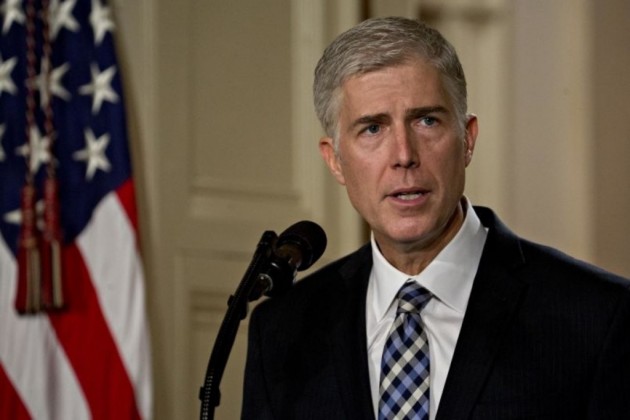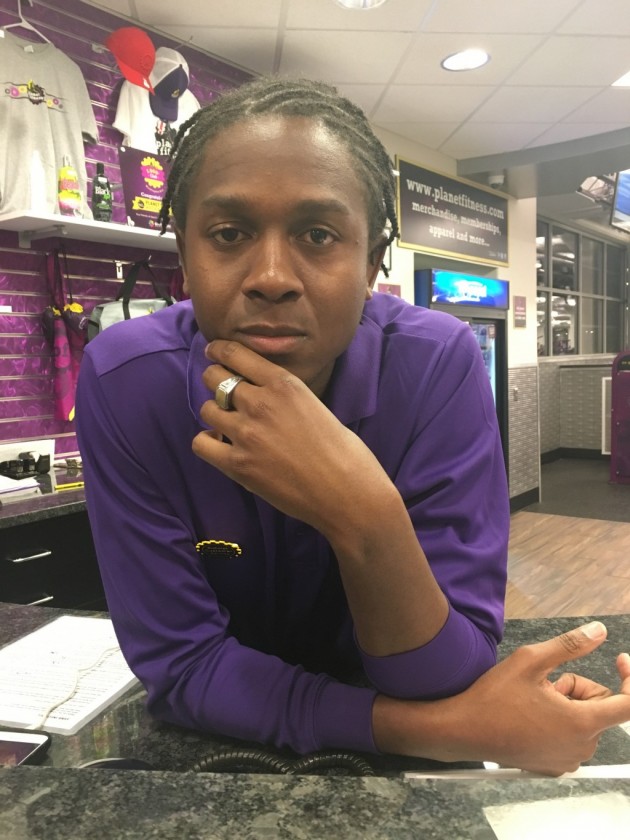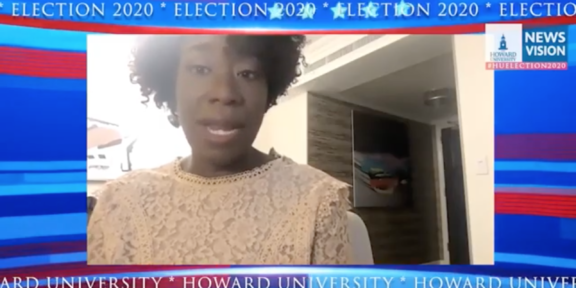NEW ORLEANS – Howard Ledet III doesn’t live like the average high school senior. Hurricane Katrina forced him and his family to move to St. Martinville, La., from their home in New Orleans. But his decision to return to his school, St. Augustine High, and his city meant leaving his family and living alone in a FEMA trailer.
“My mother didn’t want me to come back because she didn’t want me to leave her, but I told her that St. Augustine is a treasure to my heart,” Ledet said. “I had to come back. It was the only choice.”
He spoke through a mouthful of braces and with the poise of someone older than his 18 years.
His trailer, which sits on a friend’s lawn, is three inches shorter than his 6-foot-8 frame.
“It’s not too bad. You just have to adjust your muscles, I guess,” said Ledet, who is quick to say he wants to be a cardiologist, not a basketball player.
He was one of the many teens whom Howard University students met during Howard’s Alternative Spring Break, when more than 500 students packed 10 buses to New Orleans to help with the rebuilding effort. It was the second consecutive year in which Howard stu- dents traveled to the city; 250 students spent their spring break in New Orleans last year.
Although most of the Howard students spent the week gutting and building houses in the Upper Ninth Ward, 38 students reported to St. Augustine, a predominantly African American Catholic school for boys. Howard students expected to offer help in algebra, English and other subjects. Instead, they said, the lessons taught and learned often had little to do with what could be found in a textbook.
Cheree Sims, 19, a junior psychology major, asked students in Sister Julianne Blanchard’s theology class to tell where they were relocated to after Katrina.
“Houston.”
“Connecticut.”
“California.”
“Lafayette.”
“Missouri.”
“Baton Rouge.”
A boy with the name A. Williams embroidered on his shirt said that while he was in a hotel in Baton Rouge, he saw his great-aunt on the news. She was dying.
When the bell rang for lunch and the students filed out of the classroom, one ninth-grader, Dorian White, 14, stayed behind. “Do you guys get tired of us asking you about Katrina?” Sims asked.
“No. We don’t get tired of talking about it,” Dorian said. “It just gets tiring to talk about it when we know nothing is being done.”
He and his family left before the storm hit, he said, going to Mississippi before moving to Fort Smith, Ark. When they returned to the city, they were among the lucky ones – their house was standing.
“The one thing I wish I would’ve remembered before I left the house was my photo album,” Dorian said. “When we came back to our house, I ran to my room to check if it was still there. And it was, but you’d be lucky to make out one photo.”
A Growing Way to Give Back
Alternative spring breaks have been growing in popularity among college students for more than a decade. They offer an opportunity for students raised doing community service to continue giving back-and do more than head to a beach to party.
Howard students began participating in alternative spring break programs in 1995, working in a museum, tutoring inner-city students in Ohio, working on a Native Amer- ican reservation in North Carolina. Students had gone to New Orleans twice to work in poverty-stricken areas. But after Katrina ravaged the Gulf Coast, Bernard Richard- son, dean of Howard’s Andrew Rankin Memorial Chapel, approached the chapel’s alternative spring break committee about returning to lend a hand. Richardson said going to New Orleans this year was a unanimous decision.
“Everyone felt a need to go back,” Richardson said. “I don’t think we even discussed it.”
According to the Louisiana Department of Education, 62,000 students were attending 128 public schools in New Orleans before Hurricane Katrina. Now there are 26,000 students at 57 schools. Of those public schools, 17 are charter schools.
Catholic schools operate under the Archdiocese of New Orleans and were the first schools to reopen in the city. Before Katrina, 49,500 students attended 107 Catholic schools. Now 42,000 students are enrolled in 88 schools. The Rev. William Maestri, superintendent of Catholic schools and director of communications for the archdiocese, said the schools have taken in more than 1,500 students from public schools.
At St. Augustine, a swarm of students in seventh through 12th grades floods the hallways every 90 minutes, hurrying to class. Frequently they find the Rev. John Raphael, the principal and a former Howard chaplain, in the hallways making sure order is maintained.
“Tuck your shirt in,” he tells one boy as he passes.
White collars peek from the gray sweaters of the St. Augustine students; the sweaters look as new as the hallway’s purple lockers. Eighteen months ago, those hallways were filled with toxic waters. The school has spent $4.million renovating.
“The property was devastated,” said Raphael. He listed the damage: four feet of water in the gymnasium, damage to the third-floor roof. About 200 residents used the second floor as a haven from rising water.
A Katrina relief fund and donations from alumni and others alleviated the 2005-06 tuition costs for returning students, according to Suzanne Davidson, assistant to the principal. But the loss of other students and faculty also forced the school to increase tuition 5 percent this year. (Tuition is $4,000 to $5,000, depending upon the grade level, according to the school’s Web site.) It was, Raphael said of the tu- ition increase, “a tough decision.”
“Of the 700 students we have now, 300 are first-year,” he said. “We had 987 students and 80 teachers before the storm.” Of the 50 current teachers, half are new.
Ledet was one of the students who made it back. At his principal’s request, he led visitors on a tour of the renovated school.
At one point, he poked his head into a room in which Howard students were leading a discussion about college life.
“Do you have to study a lot when you’re in college?” one boy asked. “Is college hard?” asked another.
“I want to maintain the highest GPA,” Ledet said. “So when I come home, I make sure to do my schoolwork, take care of responsibilities and maintain a healthy lifestyle.”
‘Amazing and Emotional’
For Sims and Ayisha Mapp, 18, a Howard freshman political science major, returning to their sleeping quarters at the Salvation Army each night was an emotional experience. They would hold a debriefing and discuss the day’s events.
“To hear about how the boys were so strong was amazing and emotional for all of us,” Mapp said. She recounted the story of a 14- year-old who told of riding out the storm alone and finally having to unhinge the front door of his house to float to safety.
Richardson said Katrina made the spring break visits to New Orleans unique, and it changed the lives of the Howard students.
“Many students decided to change career goals as a result of the trip,” he said. As for next year, he added, “the hunch is that we’ll go back.”
It was a quiet bus ride back to Washington for Sims.
“The boys showed me that your family and your religion is what it all comes down to,” she said. “I may not remember all of their names, but I’ll never forget their stories.”




